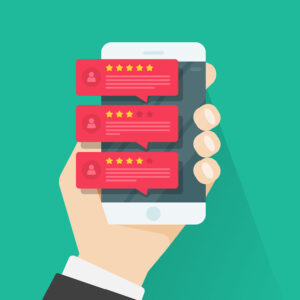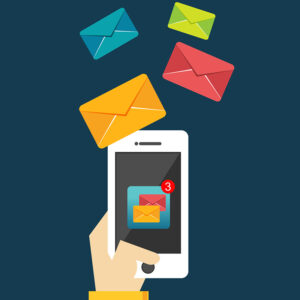Customers who are repeat buyers spend more money and are more loyal than first-time buyers. But many small businesses don’t realize that building customer loyalty is not just about the customer but also the business.
If you’re a business owner, you probably have a few loyal customers. They love your products and services; they tell their friends about them, and they’re likely to return for years. If you’ve ever had a customer like this, you know what it feels like.
But if you haven’t ever had a customer like this, it’s time to learn how to attract them by building customer loyalty. It’s a way for your business to create long-term relationships with their customers — relationships that will last for years or even decades.
At its core, loyalty is just a form of trust. Customers want to trust you with their business, and if they know that you’ll take care of them every time they buy something from you, they will be loyal customers.
Loyal customers are more likely to recommend your brand or products to friends and family. They’re also more likely to spend more money on each purchase because they feel they can trust your brand. Ultimately, building customer loyalty online can help your company grow faster and save money on expensive marketing campaigns. Let’s look at some ways to build loyalty with online customers.
Step 1: Know Your Customers
The first step is to know who your customers are. This means understanding what they want, what they like, and how they interact with you online. It also means understanding their needs, wants, and problems so that you can offer them solutions to help them solve those problems or meet their needs. Knowing this information about your audience will help you create content that resonates with them throughout every step of their customer journey.
Dig deeper to the point that you understand your customers so well that you know how they feel when they use your product. Understand why they’re buying it and how your product solves a problem for them. When you know these things, you can use that information to personalize the shopping experience more effectively.
Once you’ve learned about your customers, figure out how to stay connected to them. In the offline world, this is as simple as handing them a business card and asking them to call if they have questions. However, online businesses face a unique problem: there is no reminder of who you are or how to contact you when the customer leaves your website. As you’ll soon learn, touchpoints are a way to do that.
Step 2: Find Your Brand Voice
Have you ever walked into a store and been greeted by the store manager? If so, did he or she speak to you in a formal manner? That’s an example of brand voice. Brand voice is how your business talks to its customers, employees, vendors, and partners. It’s about being consistent across all platforms — online and off — while communicating in a tone that reflects who you are as an organization. This is how you connect with your audience.
People want to do business with people they like and trust, so creating a brand voice that will resonate with them is important. You don’t have to be the most technical or knowledgeable in your industry. Instead, you can focus on being approachable, friendly, and helpful. How can you establish a relatable brand voice online?
One way to establish a relatable brand voice online is through social media. You can use social media platforms to interact with your target audience, answer their questions and build relationships with them. Another way is to create blog content that speaks to your target audience in a tone that reflects your brand personality. Be consistent with your voice and keep it relatable and jargon-free.
Step 3: Create Touchpoints
Remember touch points? They’re important. In the world of digital marketing, touchpoints are the places where your customers interact with your brand. They include email, social media, and your website. Touchpoints are a great way to build loyalty and trust in your brand. You can use them to increase awareness about your products or services. Keep in mind that every touchpoint is an opportunity to build your brand and create a relationship with your customers.
Some examples of touchpoints are:
- Your website: This is often the first-place customers interact with your brand. Make sure your website is clear, concise, and easy to navigate. Include strong calls to action and ensure your contact information is prominently displayed.
- Email marketing: This is a great way to stay in touch with customers and keep them up to date on new products or services. Keep your emails interesting and relevant and include a call to action.
- Social media: Social media platforms are a wonderful way to connect with customers and create a relationship with them. Use social media to share valuable content, run contests or give away coupons/discounts.
Step 4: Make Loyalty Part of the Product
You can create loyalty in your customers by improving your product. You can make it more enjoyable, personalized, convenient, affordable, accessible, and sustainable.
The easiest way to build customer loyalty is to make the product better in some way that also appeals to their values and beliefs. For example, Apple knows this well: they’ve made products that are beautiful, easy to use, and reliable — all things people value highly as consumers. Other companies have built loyal customers through a variety of methods, such as giving away products for free or providing excellent customer service.
Whatever you do, make sure it’s something that appeals to your target audience. Make sure they know about it and want to use it. As an example, think of how many people are loyal customers of Amazon Prime: for $139 per year (plus sales tax), they can get free two-day shipping on any order over $25 — plus a few other perks such as access and use of Amazon Prime’s TV and film streaming platform and music streaming.
As a bonus, Amazon then uses the primary data it has on Prime subscribers to better target their ad campaigns for non-Prime shoppers. In this way, Amazon can benefit from its customer’s loyalty, which they earned through excellent service and features that customers value highly.
How can you use this strategy? Think about what your customers value most, and make sure you offer it to them. If you can create loyalty among your customer base, you can reap the benefits in multiple ways. Use data that you have on your loyal customers to better target other potential customers, showing them that they could also enjoy the same benefits if they become part of your community.
Step 5: Care About Your Customers
All of this works only if you care about your customers. If you’re in business just to make a buck, or even to make a living, customer loyalty will look different and more difficult than if you care about your customers as human beings. So, start with caring first. It doesn’t matter whether you have one customer or 10,000; treat them like people first, and then apply the methods above accordingly. The rest will come naturally.
You’re undoubtedly aware that customer loyalty is vital to business success. It’s the glue that holds your customer base together and provides a firm foundation for future growth. Start building loyalty now, and watch it pay off for your business later.

















